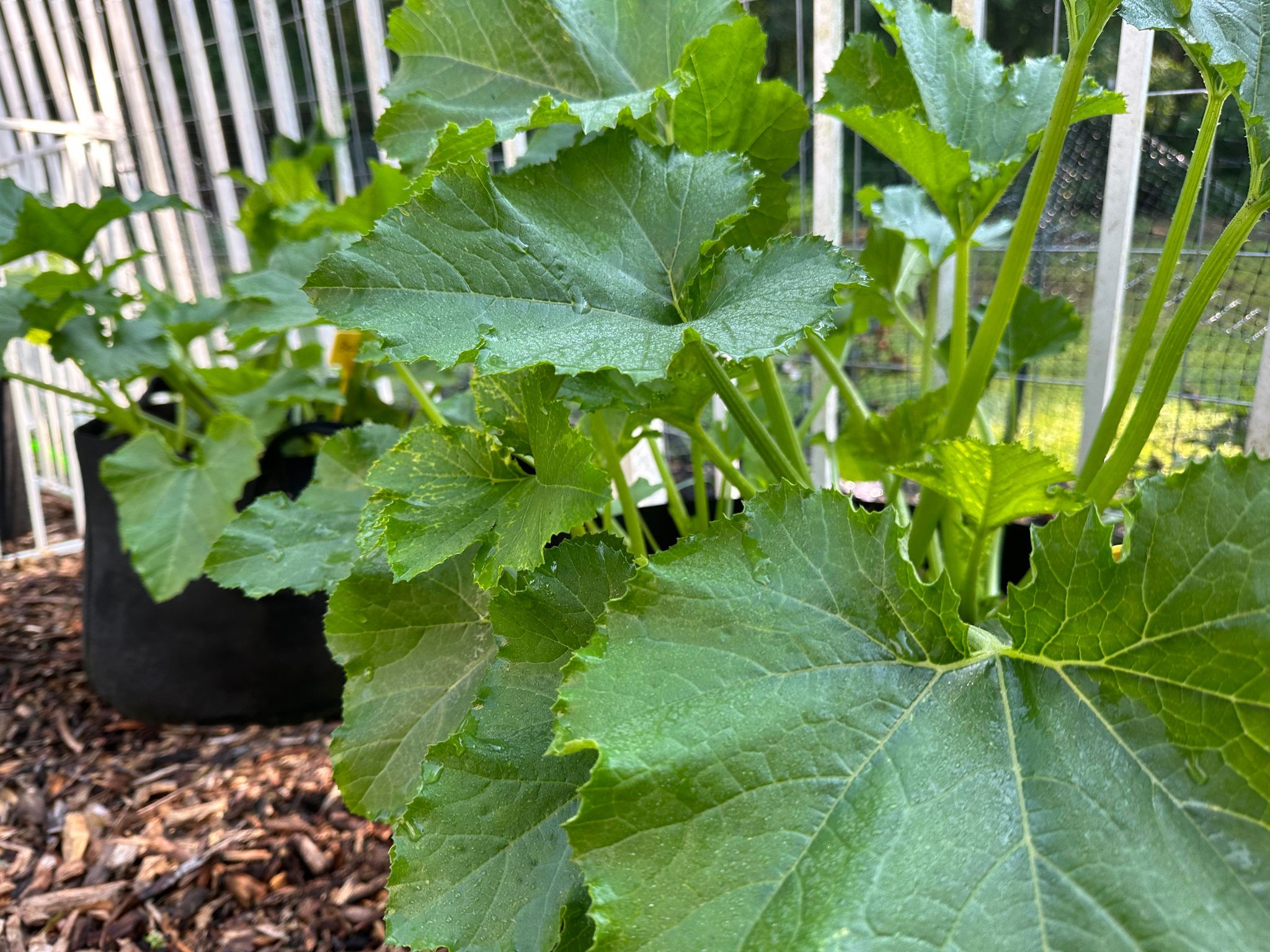After more than a month without rain, New Jersey gardeners this week are dealing with another problem. The arrival of spring rains and the conditions for powdery mildew on their zucchini plants that are just starting to blossom and fruit.
Zucchini is a versatile and delicious vegetable that finds its way into numerous recipes and gardeners’ hearts. However, one common challenge that often plagues zucchini plants is powdery mildew. This fungal disease can significantly affect plant health and yield.
The first way to fight against powdery mildew has passed, but choosing the right varieties is important. : Begin your powdery mildew prevention efforts by selecting zucchini varieties that are known for their resistance to this fungal disease. Look for cultivars labeled as “PMR” (Powdery Mildew Resistant) or “PM” (Powdery Mildew Tolerant). These varieties have been specifically bred to withstand powdery mildew infection to a certain extent, reducing the risk of severe damage.
When planting zucchini, provide adequate spacing between each plant. Crowded plants can create a favorable environment for powdery mildew to spread. Aim for a spacing of about 2-3 feet between plants to ensure good air circulation. Sufficient airflow will help reduce humidity levels and minimize the chances of powdery mildew taking hold.
To avoid excess moisture on the leaves, it’s advisable to water your zucchini plants in the morning. Watering in the early hours allows foliage to dry out during the day, discouraging the growth of powdery mildew spores. Additionally, avoid overhead watering and focus on directing water to the soil around the base of the plants to minimize leaf wetness.
Applying a layer of organic mulch around the base of zucchini plants can be beneficial in multiple ways. Mulch helps to retain soil moisture, regulate soil temperature, and prevent splashing of fungal spores onto the foliage. Opt for organic materials like straw, wood chips, or shredded leaves, which also contribute to improving soil health as they decompose.
If powdery mildew is already present or if you want to take preventive measures, there are organic fungicidal sprays available that can help suppress the disease. Look for products containing ingredients like neem oil, sulfur, or potassium bicarbonate. Read and follow the instructions carefully when using any fungicidal spray, and apply it as directed.
Keep a close eye on your zucchini plants and inspect them regularly for any signs of powdery mildew. Early detection is key to preventing the disease from spreading. If you notice any affected leaves, promptly remove them to prevent further contamination. Pruning zucchini plants to improve air circulation and remove dense foliage can also be beneficial.
With proper care and attention, you can safeguard your zucchini plants from powdery mildew and enjoy a successful harvest. Remember to choose resistant varieties, provide adequate spacing and airflow, water in the morning, mulch around the base, consider organic fungicidal sprays when necessary, and maintain regular inspections. By implementing these preventive measures and promptly addressing any signs of powdery mildew, you can ensure healthy and productive zucchini plants in your garden.

